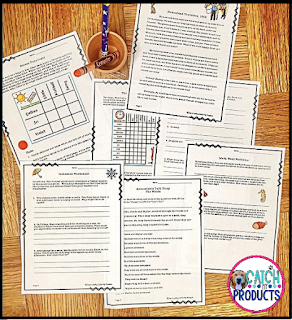Those of us who own dogs certainly understand how someone would feel if they lost their pet. After all, my dogs are my children. But as a reader, simply telling someone that you are upset does not invite them into the story. In order to truly build an understanding, the writer must show the scene as it happens.
First off, I think of what I would do if a car hit my fur baby.
- cry
- scream
- stomp my feet
- bury my face in his fur, the grass, etc.
The red Camaro whipped around the curve striking my dog, Zep, and continuing on its murderous path. Darting to the road, I sank to my knees and buried my tear filled eyes in his cold lifeless body. "No. Oh, no," I cried. Next, a blood curdling scream escaped from my throat as I moved his remains to a patch of grass. Fisting the trunk of a tree, I knew things would not be the same.
When writing with description of what happened, the reader becomes more invested in the scene. To teach this skill, I give each kids a note card with a different emotion written on it. They must write out a scene to show this emotion but are not allowed to mention the given word in their writing. Students read writing aloud as classmates have fun trying to guess which emotion the student has written about.
- happy
- sad
- angry
- proud
- mean
- afraid
- confused
- embarrassed
- worried
- surprised
I send these posts to my mailing group; however, they get a free resource along with the article. You can, too. Just join my group by clicking below!
You will also receive a FREE No Prep Problem Solving Pack!
Listed are PowerPoints to help teach this concept.
I hope you've enjoyed my series on writing skills. Tune in next week, where I will provide one final writing tip along with a prompt involving an October scene.
Thanks to Kate Hadfield Designs for the clipart.















